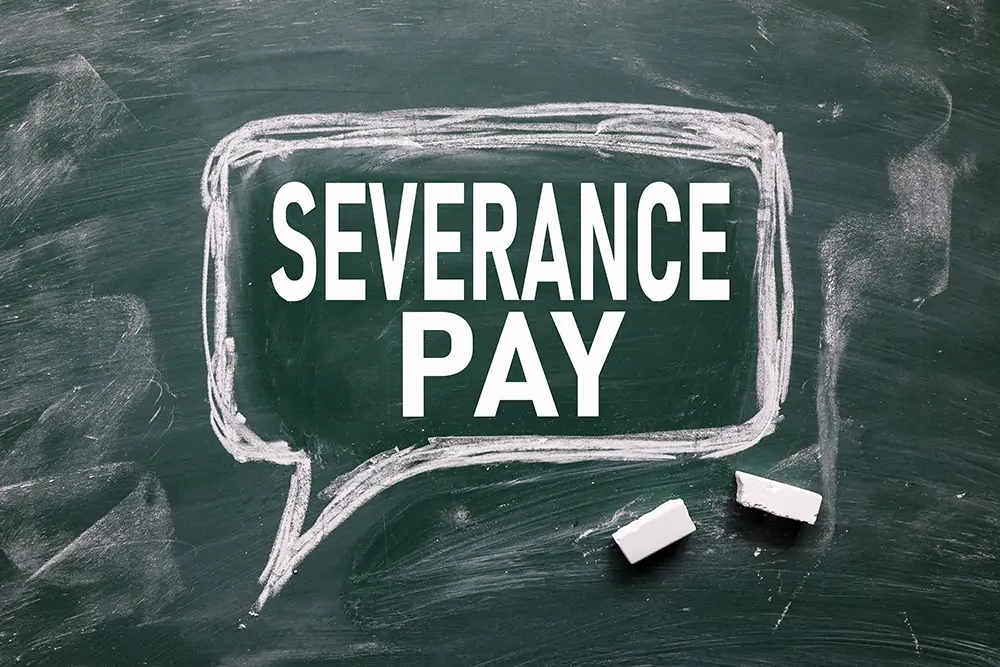If your employment is “severed”, you may be entitled to severance pay.
Severance pay is paid to a qualified employee as compensation for losses (such as loss of seniority) that occur when a long-term employee loses their job. Severance pay is not the same as termination pay, which is given in place of the required notice of termination of employment.
This blog discusses the particulars of severance pay and outlines when it occurs and who qualifies for it.
When Severance Occurs
A person’s employment is “severed” when their employer:
- dismisses or stops employing the employee, including where an employee is no longer employed due to the bankruptcy or insolvency of their employer;
- “constructively” dismisses the employee and the employee resigns in response within a reasonable time;
- lays the employee off for 35 or more weeks in a period of 52 consecutive weeks;
- lays the employee off due to the permanent closure of all business operations at a particular establishment (an “establishment” can, in some circumstances, include more than one location); or
- gives the employee written notice of termination and the employee resigns after giving two weeks’ written notice, and the resignation takes effect during the statutory notice period.
Who qualifies for severance pay
An employee qualifies for severance pay if their employment is severed and:
- they have worked for the employer for five or more years (including all the time spent by the employee in employment with the employer, whether continuous or not and whether active or not); and
- their employer has a global payroll of at least $2.5 million
or - severed the employment of 50 or more employees in a six-month period because all or part of the business permanently closed.
Calculating Severance Pay
To calculate the amount of severance pay that you are entitled to receive, you may simply multiply your regular wages for a regular work week by the sum of:
- the number of completed years of employment; and
- the number of completed months of employment divided by 12 for a year that is not completed.
The maximum amount of severance pay required to be paid under the Employment Standards Act (the “ESA”) is 26 weeks.
An employee must receive severance pay either seven days after the employee’s employment is severed or on what would have been the employee’s next regular pay day, whichever is later.
However, an employer may pay severance pay in installments with the electronic or written agreement of the employee or the approval of the Director of Employment Standards, Ministry of Labour, Immigration, Training and Skills Development. An installment plan cannot be for more than three years. If an employer fails to make a scheduled payment, all the employee’s severance pay becomes due immediately.
Wrongful Dismissal – Enhanced Rights Beyond Employment Standard Act (“ESA”) Notice of termination, Termination Pay, and Severance Pay
The rules outlined in the ESA regarding termination and severance of employment serve as minimum requirements only. This means that some employees may have rights under the common law or other legislation that give them greater rights than notice of termination (or termination pay) and severance pay under the ESA.
Takeaway
Navigating severance pay, termination pay, and/or any other legal concept in employment law requires a clear understanding of the ESA, and the specific circumstances surrounding your termination. By being informed about eligibility criteria, calculation methods, and negotiation strategies, employees can better protect their rights and secure fair severance packages during challenging times.
At Sultan Lawyers, we offer flat rate consultations which provide comprehensive information and peace of mind at a discounted rate. Whether you’ve received a severance package or have inquiries about your employment terms, connect with employment lawyers Toronto today – conveniently online or by telephone at 416-214-5111.
Your Case: Our Priority.
At Sultan Lawyers PC, we are the only firm specializing exclusively in employment and immigration law. Whether your case is straightforward or complex, we have the experience and commitment to achieve the best possible outcome. Trust us to navigate the toughest challenges with you.



